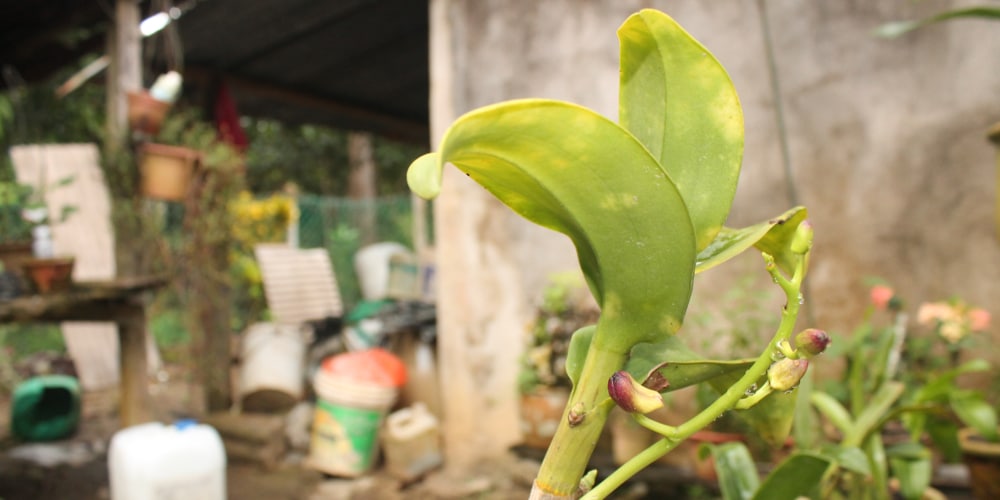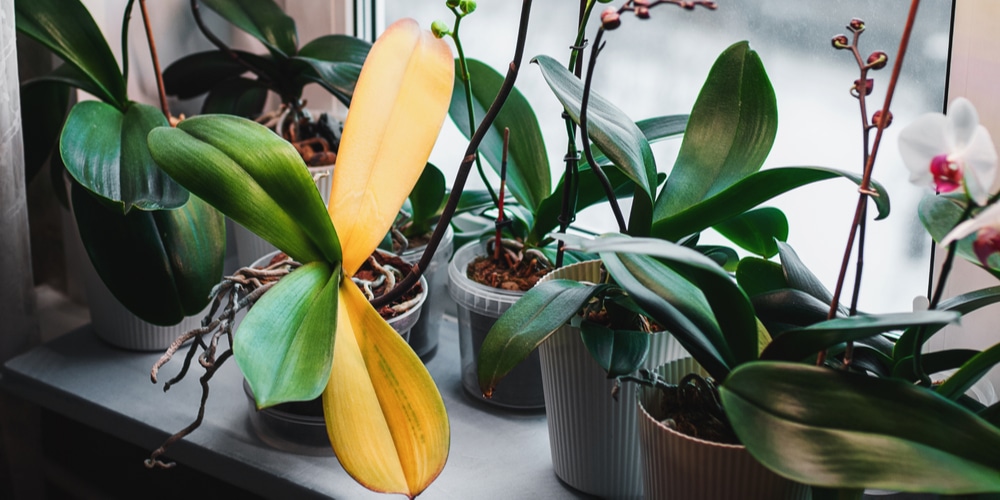It’s easy to fall into a habit of watering your orchids when it looks thirsty and when the soil is dry, but having too much moisture can be detrimental to the plant’s health.
If your orchid isn’t looking too good, you may be giving it too much water. Here are the symptoms of what overwatered orchids look like and the steps you can take to remedy the problem.
Signs of an Overwatered Orchid
Telltale symptoms of overwatered orchids are the following:
- Brown, mushy roots
- Yellowing stem
- Droopy and discolored leaves
Root Rot
The most probable effect of too much watering is root rot. Although healthy orchids can take constant watering, having its roots sit in moist or wet soil for too long will cause it to turn from green to brown, as well as firm to mushy.
An orchid with rotted roots will no longer get the water it needs to grow and will eventually die if left alone. The danger of this condition is that you won’t really know unless overwatered signs appear on the stems and leaves.
Yellowing Stems
A healthy orchid’s stems are usually dark green in color. However, a yellowing stem is a sign that the plant is dying from too much water. Unfortunately, if it reaches this point it will be very difficult to nurse the orchid back to health.
An overwatered orchid will usually show its displeasure with yellow or discolored leaves, then surface roots that change from dark green to yellow or brown. The last and most severe symptom is when the stems start turning soft and pale yellow.
Unhealthy-Looking Leaves
Orchid leaves should be dark green and shiny and hold their shape. If for some reason it starts getting droopy, then it’s best to treat it as an overwatered orchid.
The cause becomes more apparent if there’s yellowing or discoloration. Also, if the orchid has buds that are dropping prematurely then you can confirm other overwatering symptoms such as black roots and take immediate action in saving your orchid plant.
How to Fix Overwatered Orchids
The first thing you need to do is immediately stop giving your orchids water. Droopy and soft leaves are not a sign that it’s thirsty, but it’s rather the opposite.
The good news is that there might still be a chance to save your precious orchids from dying. If it only exhibits one or two yellowed leaves and the roots and stems are still green, then withholding water usually does the trick.
You can prevent this from happening next time around by watering only when the top inch or two of the soil is dry to the touch.
However, if you see the roots turning brown or black and there are yellowing leaves then you’ll want to take the steps to save an overwatered plant right away.
In a nutshell, saving a waterlogged orchid entails removing the plant from the container, allowing the roots to dry out, removing the rotted roots and replanting in fresh soil.
Repot to Save Your Orchids
Repotting is the recommended solution to save a dying and overwatered orchid. To do this, you must tip the plant to one side and remove it gently from the container. Break away any soil that clings to the roots so you can inspect which ones are still healthy.
Using a sterilized pruning shears or scissors, cut off rotted roots, e.g., those that are mushy and brown and leave about a fourth of an inch. Dispose of the soil in the pot and wash the container with soap and water.
Leave the orchid’s roots to dry out in the air while preparing a fresh batch of potting mix. You can replant the orchid into the new soil, then moisten it with water. Then, leave it in a bright location and wait for the top few inches of the soil to dry out before reaching for the watering can again.
To prevent this from happening again, you must only water when the top inch of the soil is dry. Also, do not place the container in standing water for too long. There has to be drainage holes so excess water can go out and not drown the orchid’s roots.
Related Article: How Long Do Orchids Live?

